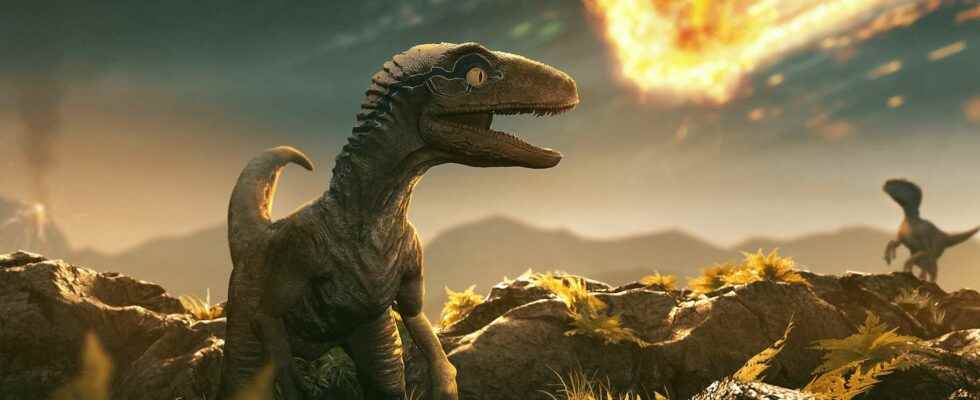You will also be interested
[EN VIDÉO] The Chicxulub crater, witness to the extinction of the dinosaurs About 65 million years ago, near the Yucatán Peninsula, Mexico, a meteorite more than 10 km in diameter crashed to Earth forming the Chicxulub crater. The shock, equivalent to about a million atomic bombs, would be partly responsible for the extinction of the dinosaurs. Discovery Science looks back on this event on video.
If the long-term consequences of the giant meteorite impact which gave birth to the crater of Chicxulub are well known (extinction of dinosaursclimate change), the fall of theasteroid also had extremely devastating immediate effects, including the generation of a large tsunami and vast forest fires.
Residents of the city of Chelyabinsk in Russia remember this : in 2013, the explosion of a “small” meteorite about 15 meters in diameter had caused a major shock wave that had done extensive damage.
Now imagine the power of the impact of an asteroid more than 10 km in diameter, as was the case 66 million years ago, at the end of the Cretaceous. L’energy released was estimated to be several billion times that of the Hiroshima bomb.
Thermal radiation charring the entire landscape in seconds
Under the effect of the shock, the rocks composing the asteroid but also the continental crust immediately vaporized, producing a huge ball of fire propagating very quickly from the point of impact, much faster than the shock wave. With temperatures above 1,000°C, the entire landscape is devastated in a few seconds, and this over several thousand kilometres.
Under the effect of this thermal radiation, the vegetation, but also all living beings, are instantly charred, even before undergoing the blast that will lay the trees on the ground, or the tsunami wave which will however intervene very quickly, only a few minutes after the impact.
Here is the terrifying picture of the events recounted in the article published in Scientific Report. English, Mexican and Brazilian researchers have indeed looked into the causes of the forest fires that occurred on the day of the disaster, but also into the chronology of the events.
Trunks charred more than 2,500 km from the impact
The scientists analyzed sedimentary deposits located more than 2,500 km from the Chicxulub crater. These deposits dating back 66 million years indeed show a significant amalgamation of debris of all kinds: fossils corals, gastropod shells and bivalves are mixed with the remains of charred tree trunks, all coated in a matrix rich in clay. This arrangement of very heterogeneous debris is none other than the mark left by the mega-tsunami which swept across the landscape quickly after the impact.
The fragments of wood are large in size, with trunk pieces up to 3 meters long. On the trunks, there are still large portions of charred bark still in place, which suggests that after burning, the trunks were very quickly buried under the sediment sailors.
This is a key observation for scientists. If the presence of coal in these deposits relatively far from the place of the impact indicated that forest fires had indeed declared more or less at that time, the exact sequence of events and their causes were still poorly constrained. Were these fires caused by the impact itself or subsequently? Certain hypotheses indeed proposed that fires would have started in a second time, for example by the action of the lightning on a ground strewn with plant debris and trees felled by the blast of the impact.
A flash fire before the arrival of the tsunami
The data from the study show, however, that the fires broke out before the occurrence of the mega-tsunami, which arrived on the site only ten minutes after the impact. The vegetation would therefore have ignited almost instantaneously at the time of the formation of the Chicxulub crater and under the effect of the heat released by the impact. Measurements made on samples of calcined bark indicate a temperature ranging from 395 to 1,022°C.
The scientists note, however, that the inside of the trunks is not burned. Two hypotheses are put forward: either the vegetation would have undergone an instantaneous conflagration linked to the thermal radiation, but this did not cause a fire as such, or the tsunami would have arrived quickly enough to extinguish the fire caused by the vague intense heat or by the fall of droplets of molten rock, drowning everything under a thick deposit of mud.
This study therefore provides significant elements allowing us to reconstruct the film of this terrifying catastrophe. It also provides a better understanding of the sequence of events immediately following a giant meteorite impact.
Interested in what you just read?
